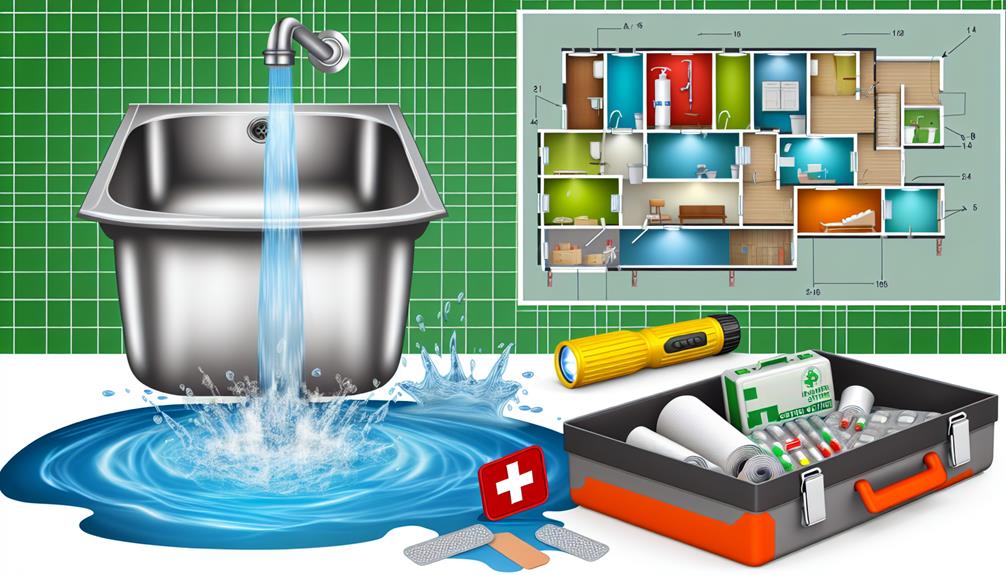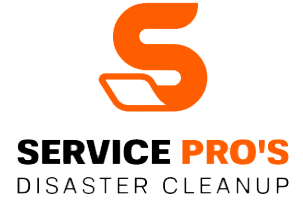Preparing for the Unexpected: Disaster Planning for Water Damage and Sewer Backups
Like a bolt from the blue, water damage and sewer backups can hit when we least expect, turning our homes into chaotic messes. We’ve all heard the adage ‘better safe than sorry,’ but how many of us are truly prepared for such unforeseen calamities?
Let’s be honest, it’s easy to ignore potential disasters until we’re in the thick of it. Yet, as we’ll discover, a comprehensive disaster plan can save us countless headaches, not to mention thousands of dollars.
But where to start, you might ask? Well, let’s embark on this journey together, arming ourselves with the knowledge and tools necessary to face these unexpected challenges head-on.
Understanding Water Damage and Sewer Backups
 Before delving into disaster planning, it’s crucial that we first understand the nature of water damage and sewer backups, and their potential impact on a property. It’s not just about puddles or a nasty smell. It’s a severe issue that can compromise the structural integrity of a building and create health hazards.
Before delving into disaster planning, it’s crucial that we first understand the nature of water damage and sewer backups, and their potential impact on a property. It’s not just about puddles or a nasty smell. It’s a severe issue that can compromise the structural integrity of a building and create health hazards.
Water damage can occur due to a variety of reasons such as pipe leaks, roof leaks, overflowing sinks, or natural disasters like floods. It can warp wood, corrode metals, damage electrical systems, and cause mould growth. If we don’t address it promptly, the damage can be extensive and costly to repair.
Sewer backups, on the other hand, are generally caused by clogs in the sewer line or heavy rainfall. It’s a messy and disgusting event that can flood our property with sewage, which is a potential biohazard. It can lead to foul odour, property damage, and serious health risks due to the bacteria and viruses present in the sewage.
In short, both water damage and sewer backups can cause significant harm to our properties and pose a threat to our health. They aren’t issues that should be taken lightly. They require immediate attention and effective action to mitigate their effects. Understanding these risks is the first step in creating a disaster plan to protect our properties and maintain a safe environment.
In the following sections, we’ll delve deeper into how we can prepare for and respond to these issues.
Essential Tools for Disaster Preparedness
Now that we’ve grasped the severity of water damage and sewer backups, let’s equip ourselves with the essential tools necessary for disaster preparedness.
The first tool we should have at our disposal is a water leak detection device. These are small, usually battery-operated devices that can detect the presence of water and trigger an alarm. This early warning can give us precious time to act before the problem escalates.
Next, we’ll need a sump pump for our basements or low-lying areas. This device can help remove water that’s accumulated, preventing it from causing further damage.
It’s also worth mentioning the importance of owning a good quality wet/dry vacuum. It can clean up spills or floods quickly, minimizing the exposure of your property to water.
A dehumidifier is also a vital tool. It reduces the moisture level in your home, preventing the growth of mold and mildew that can damage your property and harm your health.
Additionally, we shouldn’t overlook the value of an emergency repair kit. This should include items such as duct tape, plastic sheeting, and sandbags to help control minor leaks and prevent water from spreading.
Steps to Prevent Water Damage
While we’ve equipped ourselves with the necessary tools, let’s explore the proactive steps we can take to prevent water damage in the first place.
First and foremost, we need to regularly inspect our property. Look for signs of leaks or cracks in pipes, faucets, and appliances. Don’t neglect the areas that are often overlooked, such as the attic and the basement. If we spot any issues, we should address them immediately to prevent further damage.
Secondly, let’s not forget about the importance of maintaining our gutters and downspouts. We should clean them regularly, removing any debris that could cause blockages. This way, we’re helping to ensure that rainwater flows away from our property instead of pooling around the foundation, which can lead to water damage.
Additionally, we need to keep an eye on our water bill. A sudden increase in our water usage could be a sign of a hidden leak. If we notice any unexpected changes, it’s crucial to investigate.
Next, we should consider installing a water alarm. This device will alert us to any water leaks or flooding. It’s a small investment that can save us from costly repairs in the future.
Lastly, let’s remember to check our home’s water pressure. If it’s too high, it can cause pipes to crack or burst. We can easily monitor this by using a water pressure gauge.
Dealing With Sewer Backups Safely
In the unfortunate event of a sewer backup, it’s crucial that we handle the situation safely and efficiently to minimize damage and health risks. As unpleasant as it is, we can’t ignore it, as this could lead to significant structural damage and potential health hazards.
Firstly, we must avoid direct contact with the sewer water as it can contain harmful bacteria and viruses. Wearing protective clothing, gloves, and boots is essential, and we should also ensure that children and pets are kept away from the affected area.
Next, we’ll need to shut off the electricity in the affected area to avoid any electrical hazards. However, if we can’t reach the breaker without stepping in water, we should call a professional electrician.
It’s then time to document the damage for insurance purposes. We should take photographs and make a detailed list of all damaged items.
After we’ve documented the damage, we’ll need to contact a professional cleanup company. They’ll have the equipment and expertise necessary to safely clean and disinfect the area.
Lastly, we should notify our insurance company about the backup. Depending on our policy, the damage may be covered.
In the meantime, we mustn’t use any water in the house to avoid worsening the backup. We should also avoid using any electrical appliances in the affected area.
Dealing with a sewer backup safely is all about taking the right steps at the right time. It’s not the most pleasant task, but if we approach it methodically and safely, we can minimize damage and health risks.
Insurance Coverage for Water and Sewer Disasters
Having tackled the immediate response to a sewer backup, let’s turn our attention to the critical matter of understanding insurance coverage for water and sewer disasters.
It’s essential to understand that not all homeowner’s insurance policies cover these types of disasters. Therefore, we’ll need to delve into our policy’s specifics or consult our insurance agents to ensure we’re adequately covered.
Most standard homeowner’s policies don’t include flood damage. Flood insurance is typically a separate policy you can purchase through the National Flood Insurance Program (NFIP). If we live in an area prone to flooding, it’s a good idea to consider this additional coverage.
Sewer backup coverage is also not typically included in a standard homeowner’s policy. It’s usually an optional coverage that we can add to our policy for an additional premium. The cost of this coverage can vary depending on our home’s location and the potential risk of sewer backup.
As for water damage, policies can be a bit tricky. While they often cover sudden and accidental water damage—like a burst pipe—they don’t usually cover gradual damage. This means we mightn’t be covered if we’ve ignored a leaky pipe for months and it eventually causes significant damage.
Frequently Asked Questions
What Are Some Common Health Risks Associated With Water Damage and Sewer Backups?
We’ve found that common health risks include exposure to harmful bacteria, viruses, and mold. They can cause illnesses like gastroenteritis, respiratory issues, and skin infections. Always ensure to properly clean up after any water damage or sewer backups.
How Often Should Routine Maintenance Be Performed to Prevent Water Damage and Sewer Backups?
We’d suggest conducting routine maintenance every six months. It’s crucial in preventing water damage and sewer backups. Regular checks help us spot potential issues early, reducing risks and keeping everything running smoothly.
Who Should Be Contacted First When Water Damage or a Sewer Backup Occurs?
We’d first reach out to a professional water damage restoration service. They’ll assess the damage, start clean-up, and guide us on the next steps. It’s also crucial we contact our insurance company promptly.
Can Water Damage or Sewer Backups Affect the Foundation of a Building?
Absolutely, water damage or sewer backups can seriously affect a building’s foundation. We’ve seen instances where prolonged exposure to water weakens the structure, making it unsafe and requiring significant repair work.
What Are Some Signs of Potential Future Water Damage or Sewer Backups?
We’d look for signs like damp spots, peeling paint, mold growth, or sewer odor. Unusual increases in water bills can also indicate a problem. It’s crucial we act immediately to prevent further damage.


